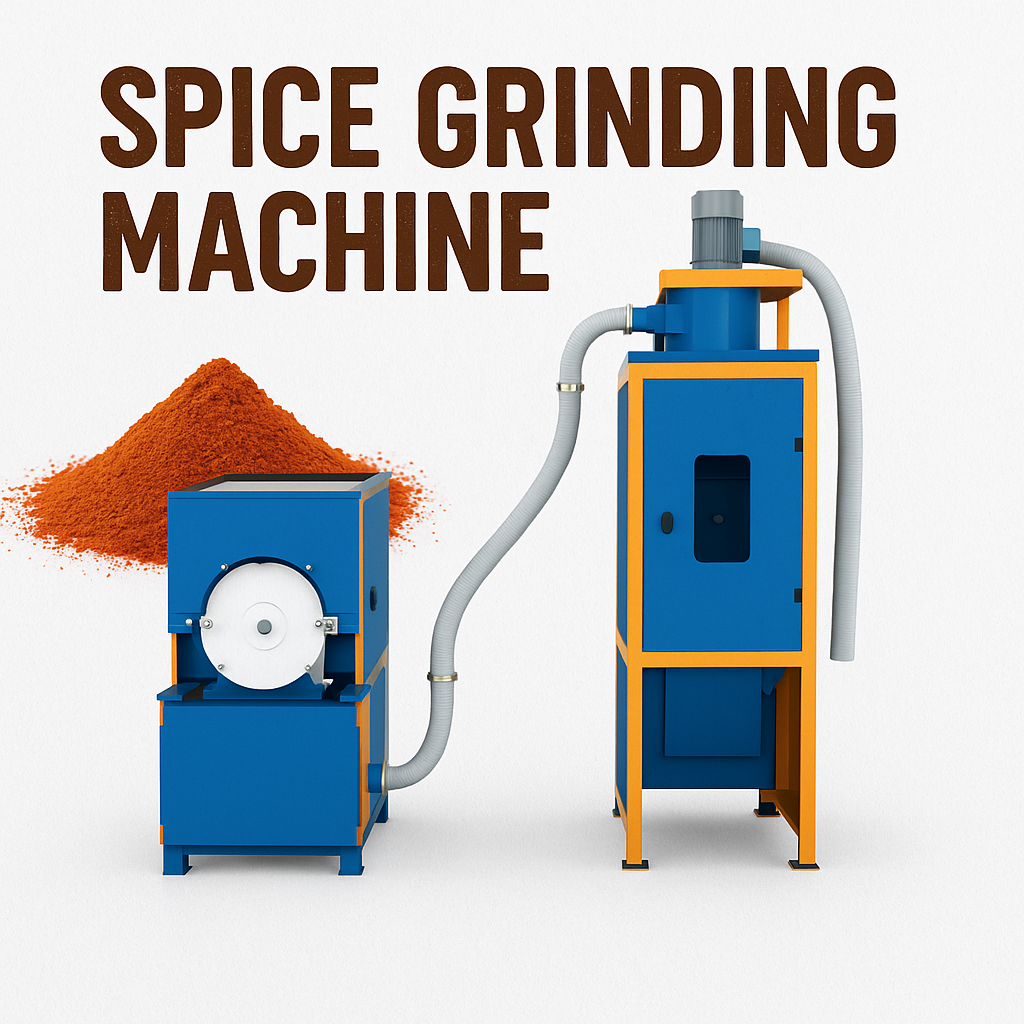
Masala Pisai Machine Price
Masala Pisai Machine Price In India : Types, Cost Factors & Buyer Tips
In Indian kitchens and spice-based businesses, the quality of ground spices can make or break a recipe. Whether you're a small home-based business, a spice manufacturer, or managing a commercial kitchen, investing in a reliable masala pisai machine (spice grinding machine) can significantly improve efficiency, consistency, and flavor.
In this blog, we’ll explore the most common types of spice grinding machines, key factors that affect the masala pisai machine price in India, and practical buyer tips to help you choose the right model.
Types of Masala Pisai Machines
1. Without Cyclone Masala Machine
These machines are ideal for small to medium-scale grinding operations.
- Power: Typically 5 HP
- Grinding Capacity: 30–50 kg/hr (depending on model)
- Masala Grinding Machine Price in India: ₹1,80,000 – ₹2,50,000
Key Features:
- Designed for dry grinding of spices such as turmeric, chili, and coriander.
- Often equipped with a double-chamber grinding system to minimize overheating.
- Compact design suitable for small businesses and limited spaces.
2. With Cyclone Masala Machine
This type includes a cyclone separator, which enhances dust collection and hygiene during grinding.
- Power: 3 HP to 5 HP
- Grinding Capacity: 50–75 kg/hr
- Price Range: ₹1,80,000 – ₹2,00,000
Key Features:
- Cyclone system ensures dust-free grinding and collection of fine powder.
- Offers better output consistency and hygiene.
- Suitable for medium to large-scale spice businesses.
Factors Influencing Masala Pisai Machine Prices
Several aspects contribute to the masala pisai machine price in India. Understanding these can help you make a cost-effective decision:
1. Motor Power (HP)
Higher-powered motors can grind tougher spices and larger volumes but come with a higher price tag.
2. Grinding Capacity
Machines with greater throughput cost more but are better suited for high-volume operations.
3. Cyclone Separator
This feature enhances hygiene and output quality, especially in commercial settings, but increases the machine cost.
4. Build Quality
Stainless steel machines offer better hygiene and durability but are more expensive than machines made with alternative metals.
5. Brand Reputation and Warranty
Well-established brands typically charge more due to their proven reliability and support services. Consider warranty coverage, customer support, and spare part availability.
Buyer Tips for Choosing a Masala Pisai Machine
1. Assess Your Requirements
Define your daily production volume. Smaller units work well for startups, while larger machines are best for established businesses.
2. Prioritize Energy Efficiency
Choose energy-efficient machines to reduce electricity consumption over time.
3. Evaluate After-Sales Support
Opt for a machine from a manufacturer that offers installation, technical guidance, and spare parts availability.
4. Check for Space Requirements
Make sure your workspace can accommodate the machine, especially for cyclone models that need more clearance.
5. Match Machine Features to Material
If you're grinding only dry spices, a basic model is sufficient. For continuous or tougher grinding, opt for a higher-capacity model with advanced cooling and dust-collection features.
Case Study: How a Local Spice Business Benefited
A small spice exporter in Gujarat upgraded from manual grinding to a cyclone-based 5 HP masala pisai machine. The result? Production capacity increased by 60%, hygiene improved, and labor costs dropped by 30%. Despite a higher initial investment, the business broke even within six months due to increased productivity and quality.
Conclusion
Investing in the right spice grinding equipment can elevate your production quality, reduce manual labor, and improve hygiene. Whether you need a simple machine for occasional grinding or a high-performance model for daily use, understanding machine types and comparing the masala pisai machine price in India will help you make a well-informed choice.
Before finalizing a purchase, consider long-term operating costs, space constraints, and support services. Doing so ensures that your investment brings maximum returns in efficiency and product quality.
FAQs
Q: What is the main difference between cyclone and non-cyclone models?
A: Cyclone machines collect fine particles and ensure cleaner, dust-free powder output, which is essential for commercial spice packaging.
Q: Can I grind wet spices in these machines?
A: No, these machines are specifically designed for dry spice grinding only.
Q: How often do the blades need replacement?
A: Typically, after grinding 1000–1500 kg of spices, though this depends on usage frequency and spice hardness.
Q: Are these machines easy to maintain?
A: Yes, most models come with removable parts and easy-to-clean grinding chambers.
Q: Is warranty support available?
Most reputable brands offer a 6-month to 1-year warranty. Always verify the warranty terms before purchase.